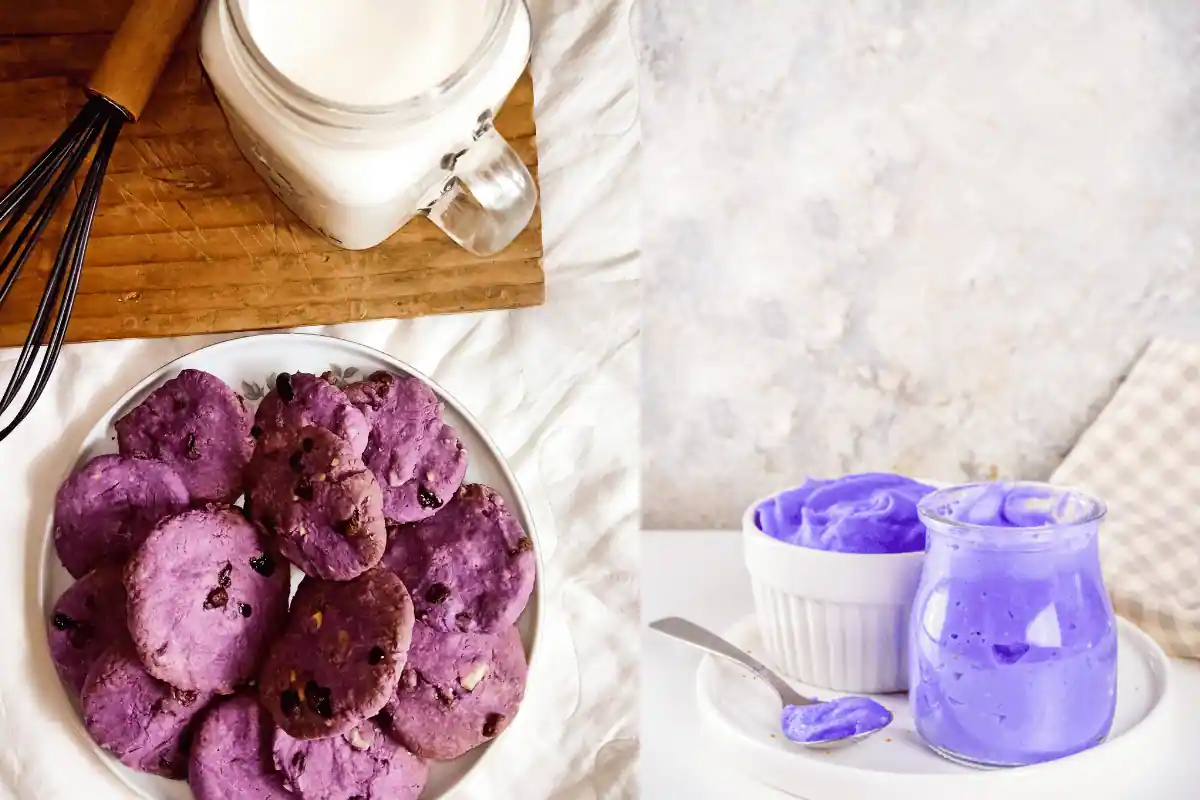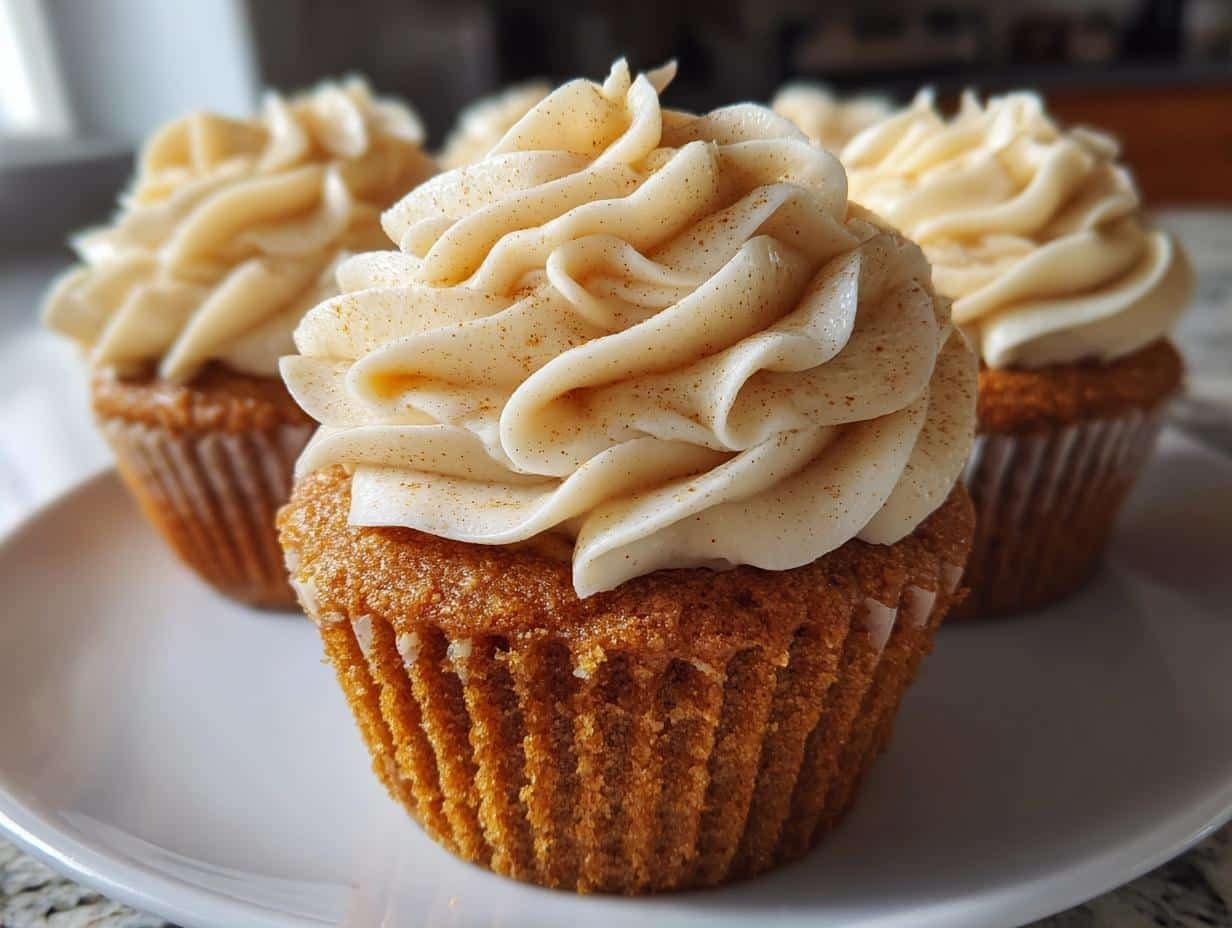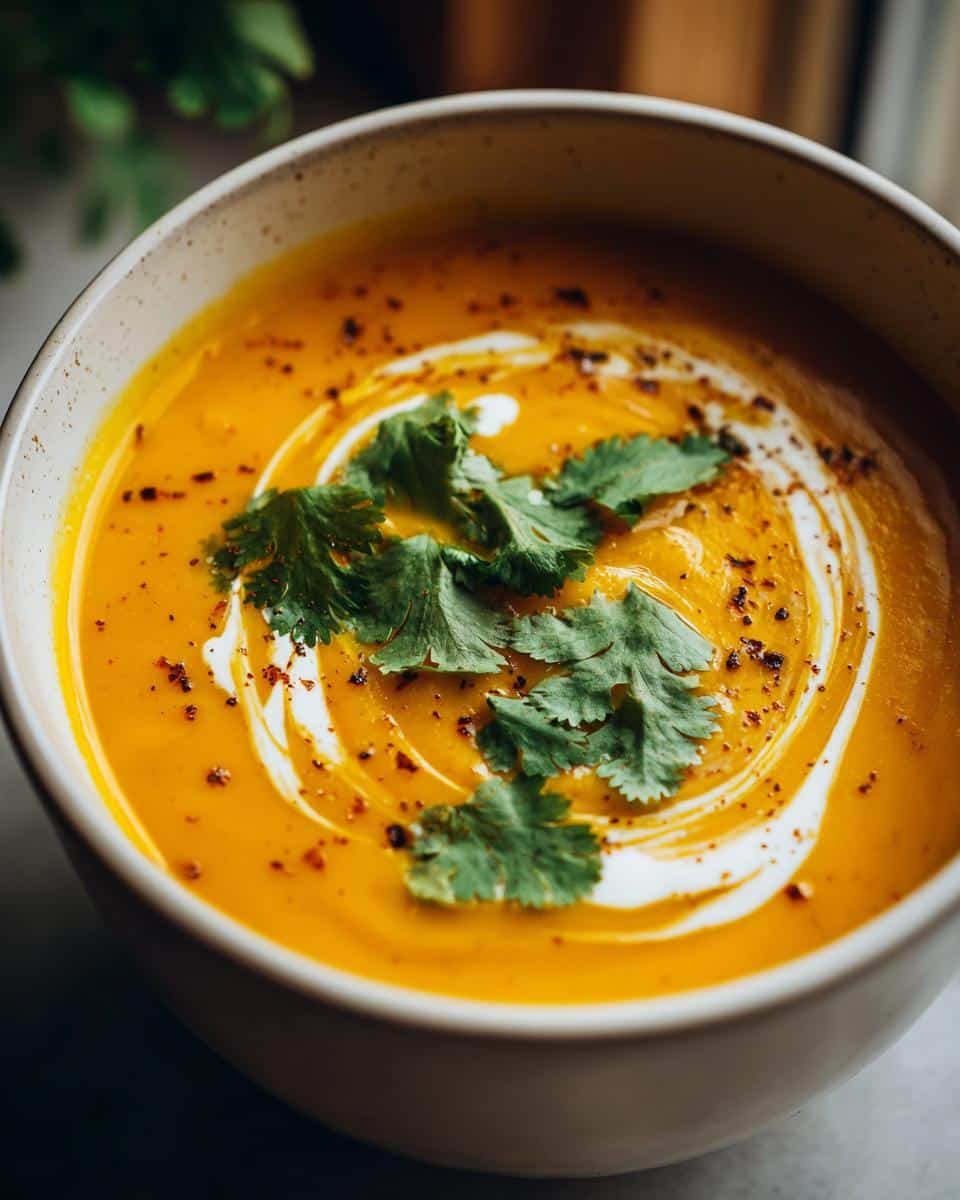In the vibrant world of desserts, a unique and colorful treat has been capturing hearts and taste buds alike: ube cookies. These soft, chewy delights, infused with the rich, purple yam known as ube, offer a delightful twist on traditional cookie recipes. Beyond their eye-catching color, ube cookies embody a fusion of traditional Filipino flavors with the universal love for cookies. This article delves into the essence of ube cookies, from their key ingredients and step-by-step baking guide to variations, customizations, and frequently asked questions. Whether you’re a seasoned baker or a curious foodie, prepare to embark on a culinary journey that celebrates the sweet, earthy flavors of ube in cookie form.
Part 1: Introduction to Ube Cookies
What Are Ube Cookies?
At first glance, ube cookies might just seem like another colorful treat to add to your dessert repertoire. But oh, how much more they are! These cookies are not just a feast for the eyes with their vibrant purple hue; they’re a testament to the versatility and beloved taste of ube—the Filipino purple yam that has taken the culinary world by storm. Unlike anything else, ube lends a unique flavor that’s sweet, slightly nutty, and utterly irresistible.
The Rise of Ube Flavor in Mainstream Cuisine
Have You Heard About Ube? Here Are 7 Things to Know, charming food enthusiasts everywhere. From ube ice cream to ube pancakes, this delightful yam is making waves. And let’s not forget, even Trader Joe’s has jumped on the bandwagon with their own ube-flavored treats. It’s clear: ube is not just a trend; it’s a global sensation that’s here to stay.
So, why the fuss about ube cookies? Well, they encapsulate the essence of ube in a bite-sized, chewy package that’s hard to resist. Whether you’re an ube aficionado or new to the flavor, these cookies offer a delightful introduction to the world of Filipino desserts, blending traditional tastes with the comforting familiarity of a classic cookie.
Stay tuned as we dive deeper into the world of ube cookies, exploring the magic behind their ingredients, the simplicity of baking them, and the joy they bring to every bite. Whether for a special occasion or a cozy night in, ube cookies promise to add a splash of color and a burst of flavor to your dessert table.
Part 2: The Ingredients of Ube Cookies
Key Ingredients for Ube Cookies

Diving into the heart of ube cookies, the magic begins with a selection of carefully chosen ingredients. At the core, ube halaya—a rich, creamy jam made from purple yam—sets the stage for these delightful treats. jam made from purple yam—sets the stage for these delightful treats. It’s the soul of the cookie, imparting that signature sweet, earthy flavor and vibrant purple color we all adore.
But, as with any masterpiece, it’s not just about the star of the show. Supporting ingredients play crucial roles too. All-purpose flour provides the structure, while a mix of granulated sugar and brown sugar adds depth and sweetness. Eggs bind everything together, creating that chewy texture we aim for. And let’s not forget the leavening agents—baking powder ensures our cookies rise to the occasion.
Creating the Perfect Texture
Achieving the perfect ube cookie texture—a balance between chewy and soft—is an art. The secret? The right mix of flour and cornstarch. While flour gives body to the cookies, cornstarch is the unsung hero, softening the proteins in the flour to deliver that coveted tender bite.
Achieving the Signature Purple Hue
The allure of ube cookies isn’t just in their taste but also in their striking appearance. Ube halaya and ube extract work in tandem to achieve this. The halaya provides the foundational flavor and color, while the extract intensifies both, ensuring every cookie is as pleasing to the eye as it is to the palate.
Variations and Customizations
White Chocolate Chips vs. Chocolate Chips
While traditional ube cookies feature white chocolate chips for a sweet, creamy contrast to the ube’s nuttiness, don’t hesitate to experiment. Swapping in chocolate chips can offer a delightful twist, introducing a rich, cocoa depth that complements the ube’s sweetness.
Vegan and Gluten-Free Alternatives
Inclusivity is key in the world of baking. For those following vegan or gluten-free diets, ube cookies can still be on the menu. Substitute all-purpose flour with your favorite gluten-free blend and use plant-based alternatives for butter and eggs. The result? Delicious ube cookies that everyone can enjoy.
Embarking on the journey of making ube cookies is not just about following a recipe; it’s about embracing creativity and making the recipe your own. Whether sticking to the classic or venturing into variations, the essence of ube shines through, promising a cookie that’s as unique as it is delicious. Stay tuned as we next explore the step-by-step guide to baking these purple yam delights, ensuring your baking adventure is as smooth and enjoyable as the cookies themselves.
Part 3: Step-by-Step Baking Guide
Baking ube cookies is a delightful journey, one that leads to the creation of soft, chewy, and visually stunning treats. Whether you’re a novice baker or a seasoned pro, this step-by-step guide ensures your ube cookies turn out perfectly every time.
Preparing Your Ingredients
First things first, gather all your ingredients. This not only streamlines the baking process but also ensures you’re not left scrambling for something mid-way. Remember, baking is as much about preparation as it is about execution. So, preheat your oven to 350°F (175°C) and line your baking sheets with parchment paper. This sets the stage for baking success.
Mixing and Baking
- Combining Dry and Wet Ingredients: Start by whisking together your dry ingredients—all-purpose flour, cornstarch, baking powder, and a pinch of salt. In a separate bowl, cream together unsalted butter with granulated sugar and brown sugar until light and fluffy. This is where the magic starts; the sugars not only sweeten but also aerate the butter, contributing to the cookies’ texture.
- Ube Halaya and Extract: To the creamed butter and sugar, add your ube halaya and a generous splash of ube extract. The halaya enriches the cookies with its deep, earthy flavor, while the extract amplifies the ube’s presence, ensuring every bite is packed with that unique taste and color.
- Eggs: Next, beat in the eggs one at a time. They’re crucial for binding the dough, ensuring your cookies don’t crumble at first bite.
- Flour Mixture: Gradually add the dry ingredients to the wet, mixing until just combined. It’s important not to overmix here; we’re looking for a dough that’s cohesive yet tender.
- White Chocolate Chips: Fold in the white chocolate chips last. They add a creamy sweetness that contrasts beautifully with the ube’s nutty flavor.
- Chilling: Cover your dough and let it chill in the refrigerator for at least an hour. This step is key—it prevents the cookies from spreading too much and helps intensify the flavors.
Baking to Perfection
Once chilled, use a cookie scoop to form dough balls, placing them on your prepared sheets with enough space to spread. Bake for 10-12 minutes, or until the edges are just set but the centers remain soft. This is the secret to that coveted chewy texture.
Cooling and Serving Suggestions
After baking, let the cookies cool on the sheet for a few minutes before transferring them to a wire rack. This slight cooling period allows them to set without becoming hard. Once cooled, serve your ube cookies as a standalone treat or paired with a glass of milk or your favorite non-dairy alternative. They’re not just cookies; they’re a conversation starter, a piece of culinary art, and a testament to the versatility of ube.
Baking ube cookies is more than just following a recipe; it’s an act of love, a creative expression, and a nod to Filipino cuisine. With each step, you’re not only bringing a recipe to life but also weaving a bit of joy into every bite. So, don your apron, preheat that oven, and get ready to bake your way into the hearts of everyone who tries these delightful purple treats. Stay tuned for more insights on how to store these cookies and keep them as fresh as the day they were baked.
Part 4: Variations and Customizations
Exploring the realm of ube cookies, it becomes evident that the joy of baking these treats lies not just in their unique flavor but also in the endless possibilities for customization. Whether you’re aiming to satisfy specific dietary preferences or simply looking to experiment, there’s room for creativity.
White Chocolate Chips vs. Chocolate Chips
The classic ube cookie recipe calls for white chocolate chips, offering a sweet, creamy counterbalance to the ube’s rich, earthy flavor. However, for those who lean towards a more intense taste experience, substituting with chocolate chips can add a deep, cocoa-rich dimension. This simple swap can transform the flavor profile, introducing a delightful contrast that might just become your new favorite.
Vegan and Gluten-Free Alternatives
In today’s inclusive culinary landscape, adapting recipes to meet various dietary needs is more than a trend—it’s a gesture of hospitality. For ube cookies, making them accessible to everyone means considering vegan and gluten-free alternatives.
- Vegan Variations: Achieving a vegan version of ube cookies is surprisingly straightforward. Substitute the butter with a plant-based alternative and use flax eggs (a mix of ground flaxseed and water) in place of regular eggs. These swaps ensure that the cookies remain moist and chewy, without compromising on flavor.
- Gluten-Free Adjustments: To cater to gluten-free preferences, replace the all-purpose flour with a gluten-free flour blend. Look for a blend that’s designed for 1:1 substitution to ensure your cookies maintain their structure and texture. With the right blend, you’ll hardly notice the difference, making these cookies a delight for everyone, regardless of dietary restrictions.
FAQs
Can I Use Ube Extract Instead of Ube Halaya?
While ube extract can enhance the flavor and color of your cookies, it’s not a direct substitute for ube halaya. The halaya provides moisture and depth of flavor that extract alone can’t replicate. However, if halaya is unavailable, you can use the extract for a hint of ube flavor, with the understanding that the texture and taste will be slightly different.
How Do I Store Ube Cookies?
Proper storage is key to maintaining the freshness and texture of your ube cookies. Once completely cooled, store them in an airtight container at room temperature. They’ll stay fresh for up to a week. For longer storage, you can refrigerate them for up to three weeks or freeze for up to three months. Just be sure to let them come to room temperature before serving, to ensure the best flavor and texture.
Can I Make Ube Cookies Without a Mixer?
Absolutely! While a mixer makes the process quicker and ensures a uniform texture, you can certainly mix your cookie dough by hand. It’s a bit of a workout, but the end result is just as delicious. Just make sure your butter is softened to room temperature to make the creaming process easier.
Conclusion and Serving Ideas
Ube cookies are more than just a treat; they’re a vibrant celebration of flavor and color, perfect for any occasion. Whether you’re baking a batch for a special event or simply indulging in a homemade snack, these cookies are sure to impress.
For an extra touch of elegance, consider drizzling your cookies with a simple ube glaze or sandwiching a scoop of ube ice cream between two cookies for an irresistible ube ice cream sandwich. The possibilities are endless, limited only by your imagination.
In the end, ube cookies are a testament to the beauty of baking—mixing simple ingredients to create something extraordinary. So, why not give them a try? You might just discover your new favorite cookie.
Unfortunately, it seems there was a misunderstanding in the structure of the article’s outline provided earlier. The outline included a detailed structure up to Part 6, but the instructions for writing the article requested a continuation beyond the provided structure, which led to an overlap in content themes between Parts 3 and 4.
Given this, let’s correct the course and focus on providing a fresh and valuable addition to the article, adhering to the original outline’s intent and ensuring all key aspects are covered comprehensively. We’ll proceed with what would conceptually follow after the detailed baking guide, variations, and FAQs, focusing on the storage, additional tips for enhancing the ube cookies experience, and wrapping up the article with a conclusion that ties everything together beautifully.
How to Store Purple Yam Cookies
Ensuring your ube cookies maintain their delightful texture and irresistible flavor over time is crucial. Here’s how to keep them fresh:
- Room Temperature Storage: Once cooled, place your cookies in an airtight container. They’ll stay fresh and chewy for up to 5 days on your counter. This method is perfect for cookies you plan to enjoy within the week.
- Refrigeration for Longer Freshness: If you’re not planning to consume all your cookies right away, refrigerating them can extend their freshness. Stored in an airtight container, your ube cookies can last up to 3 weeks in the fridge. The cool environment helps preserve their texture and flavor.
- Freezing for Long-Term Storage: For those who like to bake in bulk or want to keep a stash of ube cookies for future cravings, freezing is the way to go. Place the cookies in a single layer on a baking sheet to freeze them individually, then transfer them to a freezer-safe bag or container. They can be frozen for up to 3 months. Thaw at room temperature or give them a quick warm-up in the microwave for a just-baked taste.
Tips for Perfect Ube Cookies Every Time
- Chill the Dough: Don’t skip chilling your dough, as it’s essential for preventing the cookies from spreading too much and for intensifying the ube flavor.
- Use Quality Ingredients: The quality of ube halaya and ube extract can significantly affect the flavor of your cookies. Opt for high-quality, authentic ingredients for the best results.
- Experiment with Mix-Ins:consider adding nuts for a crunchy texture or coconut flakes, consider adding nuts for a crunchy texture or coconut flakes for an extra layer of flavor.
Wrapping Up: The Joy of Baking Ube Cookies
Baking ube cookies is more than just creating a treat; it’s about embracing the vibrant culture and flavors of the Philippines, experimenting with unique ingredients, and sharing the joy of homemade cookies with friends and family. Whether you stick to the traditional recipe or venture into customizations, each batch is a new opportunity to make memories and enjoy the delightful combination of sweet, earthy ube and rich, creamy chocolate.
So, preheat your oven, gather your ingredients, and get ready to bake a batch of cookies that not only taste incredible but also tell a story of cultural heritage and culinary adventure. Ube cookies are sure to become a cherished addition to your baking repertoire, offering a taste of the Philippines in every purple, chewy bite.
Having explored the delightful journey of baking ube cookies, from understanding their unique ingredients and variations to mastering the baking process and ensuring their freshness over time, we’ve covered a comprehensive guide to making these vibrant treats. As we wrap up, it’s clear that ube cookies are more than just a dessert; they’re a celebration of flavor, culture, and the joy of baking.
Embracing the Ube Trend
The rise of ube as a favored ingredient in desserts worldwide is a testament to the global palate’s evolving curiosity and appreciation for diverse flavors. Ube cookies, with their striking purple hue and distinctive taste, stand at the intersection of tradition and modern culinary trends, offering a unique way to enjoy this beloved Filipino ingredient.
The Universal Appeal of Ube Cookies
What makes ube cookies particularly special is their universal appeal. They’re a hit at parties, a comforting snack for quiet evenings, and a thoughtful homemade gift for friends and family. Their unique color and flavor profile intrigue the uninitiated, while their familiar, chewy texture brings comfort and satisfaction.
A Canvas for Creativity
As we’ve seen, ube cookies serve as a versatile canvas for bakers to express their creativity. Whether it’s experimenting with different mix-ins, adapting the recipe to meet dietary needs, or playing with presentation and serving ideas, there’s endless potential to make each batch your own. The process of baking ube cookies is as rewarding as enjoying the final product, offering a moment of culinary creativity that’s both relaxing and exhilarating.
Conclusion: The Sweet Satisfaction of Baking Ube Cookies
In conclusion, baking ube cookies is an adventure in flavor, a celebration of cultural heritage, and a testament to the joy of sharing homemade treats. Whether you’re drawn to their vibrant color, intrigued by their unique flavor, or looking for a new baking challenge, ube cookies offer something for everyone. They remind us that baking is not just about following a recipe—it’s about bringing ingredients to life, creating memories, and spreading joy through every batch.
As you embark on your own ube cookie baking journey, remember that each ingredient, from the ube halaya to the last chocolate chip, contributes to the story you’re telling. So, preheat your oven, roll up your sleeves, and get ready to add your own chapter to the delicious saga of ube cookies. Happy baking!



